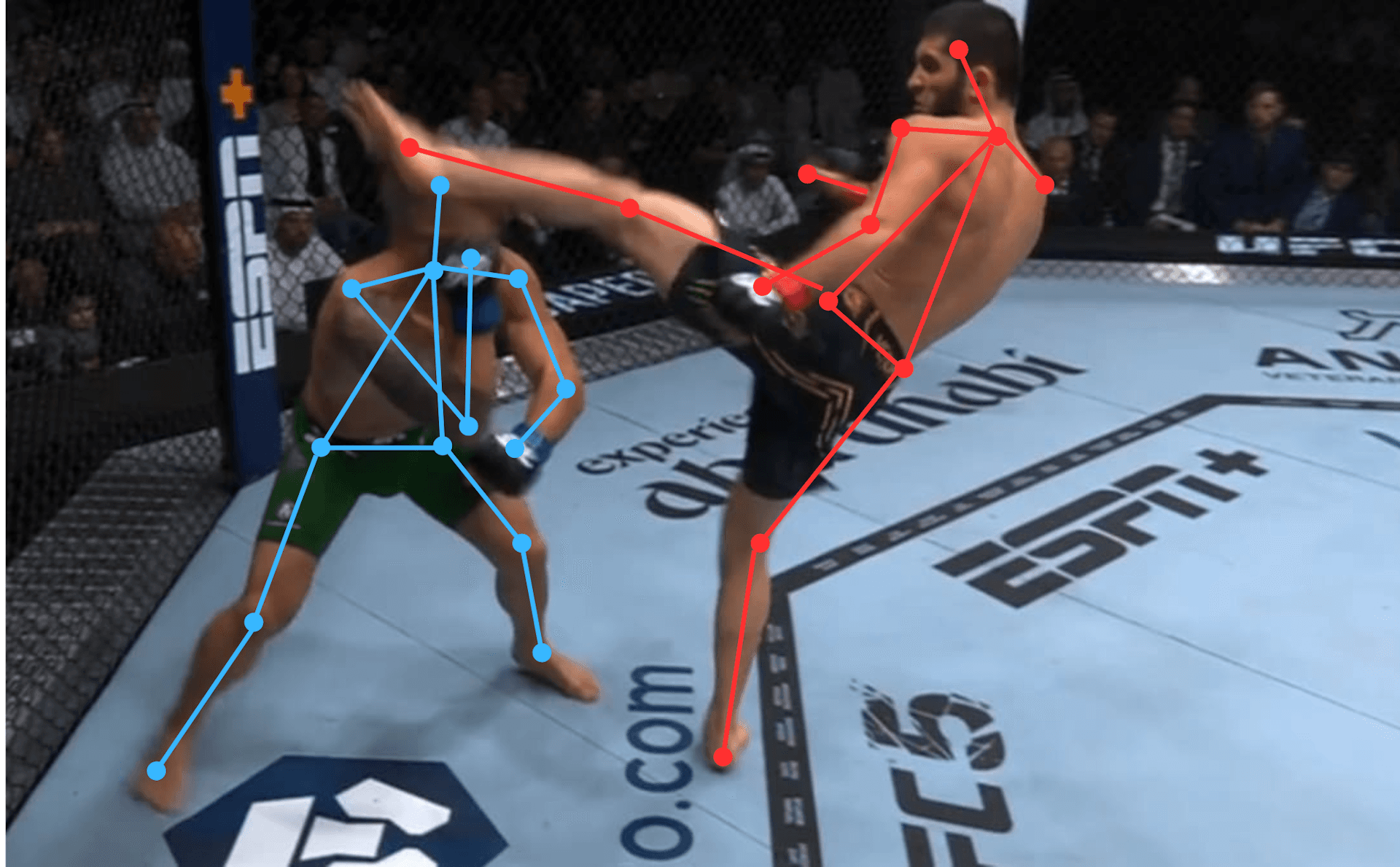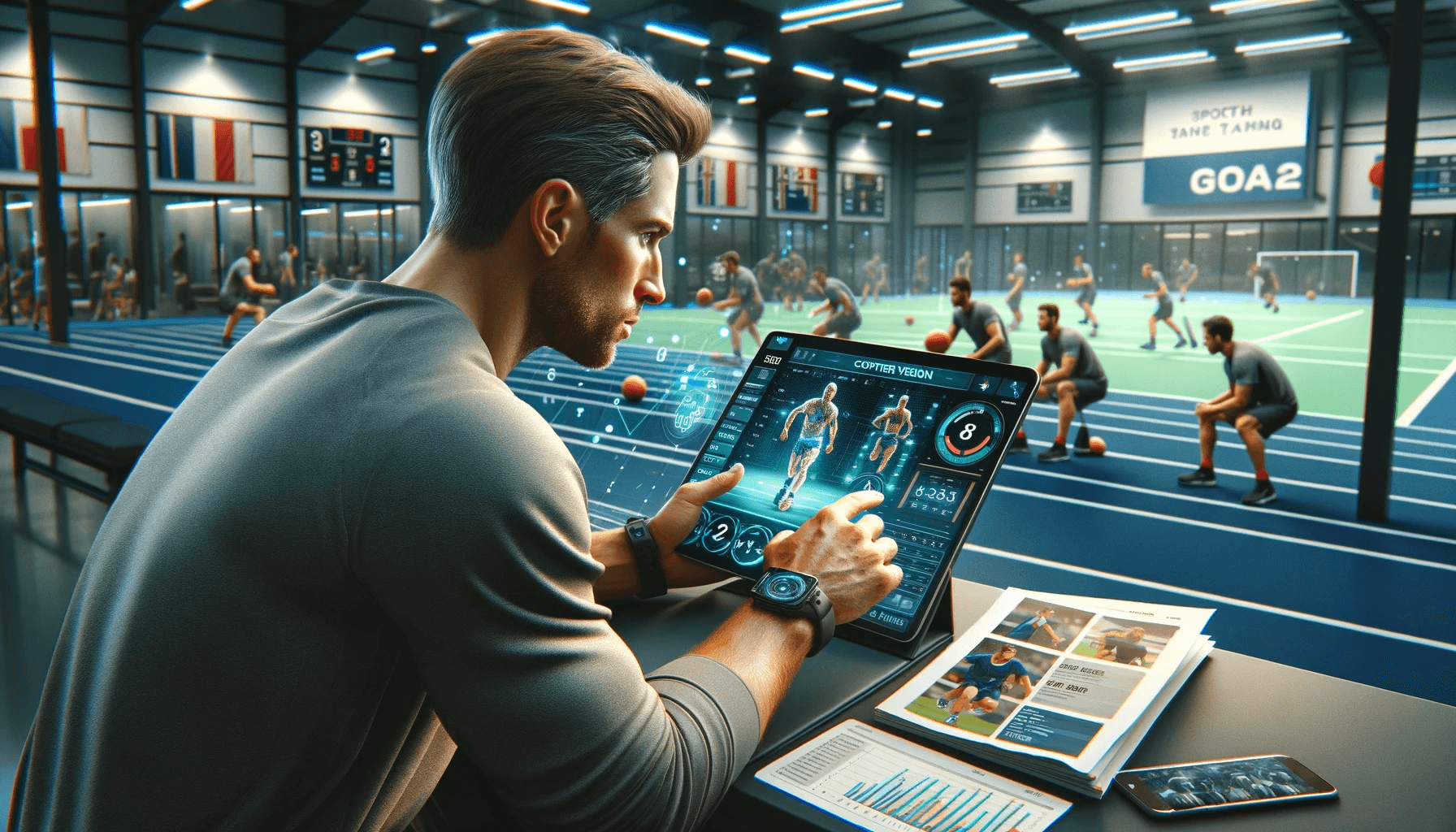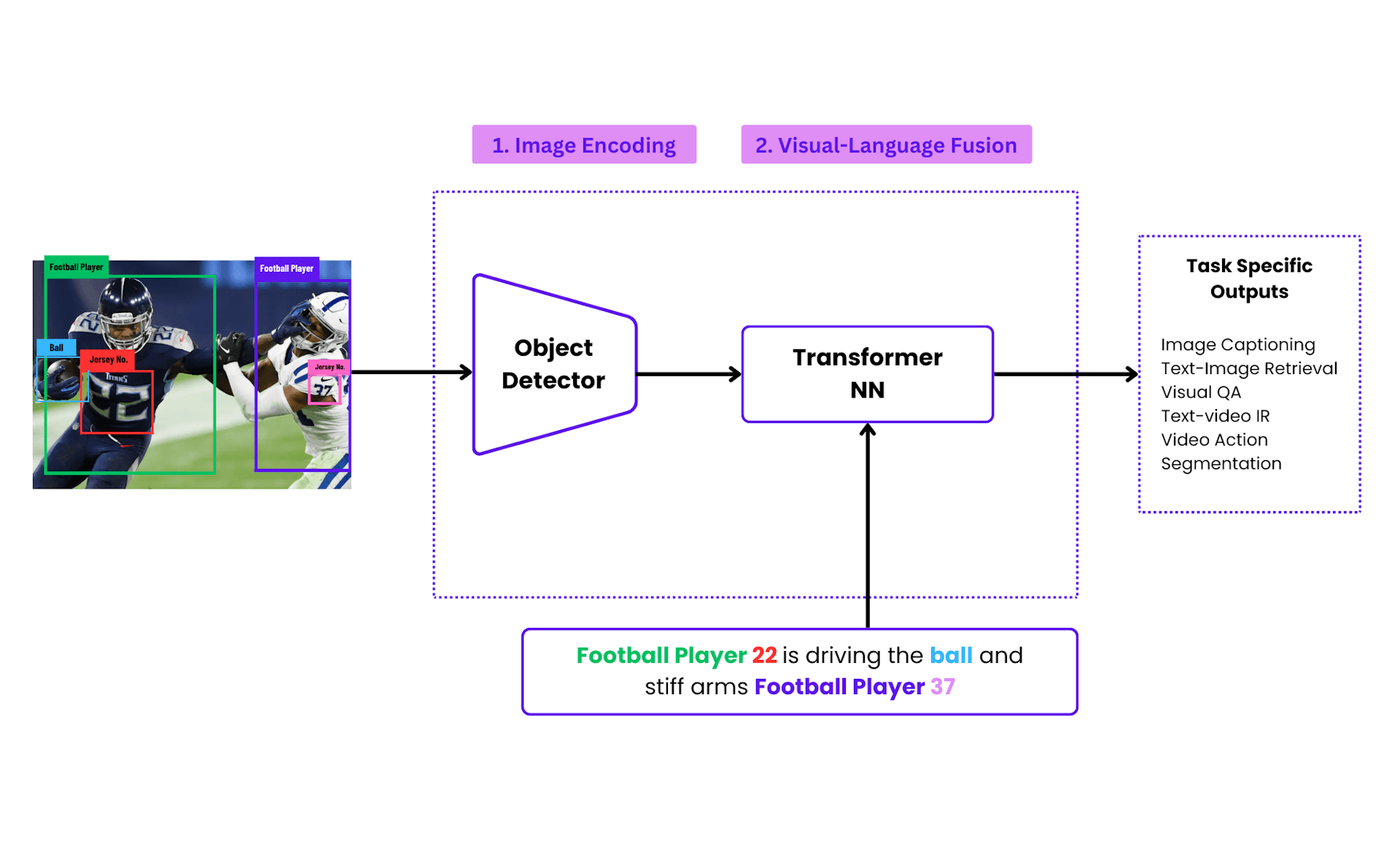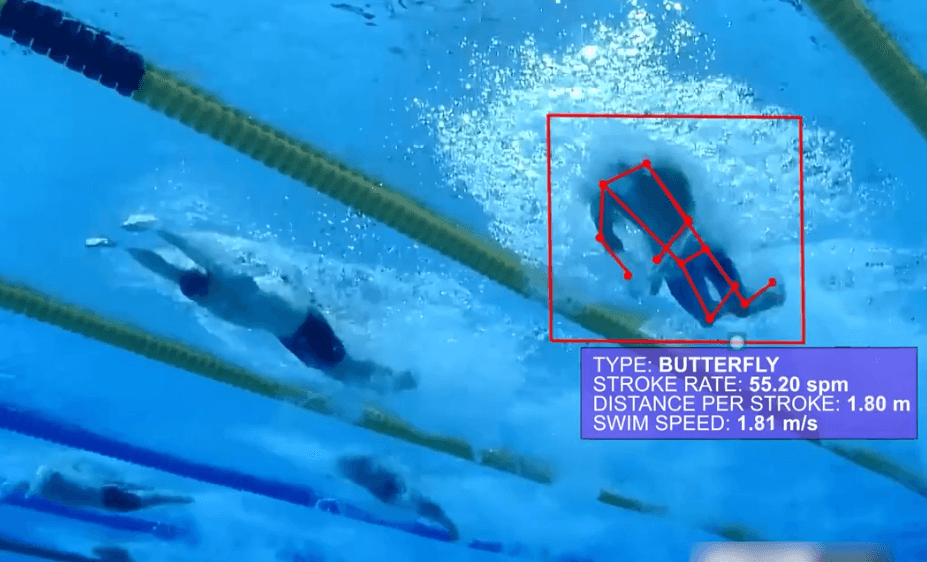Introduction to Computer Vision in Sports
The sports industry is undergoing a technological revolution, and at the forefront of this change is computer vision (CV). This cutting-edge technology uses artificial intelligence (AI) algorithms to interpret and make decisions based on visual data from cameras and sensors. From enhancing athlete performance to ensuring safety and improving fan engagement, computer vision is transforming how we experience and interact with sports.
Computer vision technologies are being harnessed to extract valuable insights from video footage, real-time data streams, and sensor data, transforming the way sports are analyzed, optimized, and experienced. The applications of computer vision in sports are vast and diverse, ranging from performance analysis and player tracking to automated highlight generation and immersive fan experiences.
Real-Time Performance Analysis and Optimization

One of the most impactful applications of computer vision in sports is real-time performance analysis and optimization. By deploying computer vision systems equipped with high-resolution cameras and advanced tracking algorithms, sports teams can capture and analyze the movements, techniques, and strategies of athletes in real-time.
Benefits:
Performance Analysis: Coaches and analysts can review athlete performance more efficiently.
Strategy Improvement: Identify and analyze key moments in games to improve strategies.
Player Development: Track progress and provide personalized feedback to athletes.
Moreover, computer vision-based performance analysis extends beyond the field of play. By analyzing video footage from multiple angles and combining it with sensor data from wearable devices, teams can gain comprehensive insights into an athlete's overall performance, including their speed, agility, endurance, and recovery patterns. This holistic approach to performance optimization empowers athletes and coaches to fine-tune training regimens, prevent overexertion, and maximize athletic potential.
Automated Highlight Generation and Content Creation
In the fast-paced world of sports media, the ability to quickly generate compelling highlight reels and engaging content is crucial. Computer vision technology is revolutionizing this domain by automating the process of highlight generation and content creation.
Benefits:
Speed: Quickly generate highlights from live or recorded footage.
Accuracy: Identify key moments with high precision.
Engagement: Create engaging content for fans and broadcasters.
Advanced computer vision algorithms can analyze live video feeds or recorded footage, identifying key moments such as goals, spectacular plays, or game-changing events. By leveraging deep learning models trained on vast datasets of sports footage, these systems can accurately detect and extract the most exciting and relevant moments, creating instant highlight reels that capture the essence of the game.
Furthermore, computer vision can enhance the storytelling aspect of sports content creation. By analyzing player emotions, crowd reactions, and the overall context of the game, computer vision systems can generate personalized narratives, player profiles, and data-driven insights that enrich the viewing experience for fans.
Immersive Fan Experiences with Augmented Reality
Computer vision technology is not only transforming the way sports are played and analyzed but also revolutionizing the fan experience. Augmented reality (AR), powered by computer vision, is opening up new dimensions of interactivity and immersion for sports enthusiasts.
Benefits:
Enhanced Viewing: Overlay real-time data and stats onto live video.
Interactivity: Engage with virtual elements seamlessly integrated into live action.
Accessibility: Enjoy immersive experiences from anywhere.
By leveraging computer vision algorithms and advanced display technologies, AR systems can overlay real-time data, statistics, and visual effects onto live video feeds or the physical environment. This allows fans to access contextual information, player profiles, and performance metrics in real-time, enhancing their understanding and enjoyment of the game.
AR experiences can extend beyond the stadium or arena, enabling fans to engage with their favorite sports and teams from the comfort of their homes. Through AR-enabled mobile apps or smart glasses, fans can virtually place themselves in the midst of the action, experiencing the thrill of the game from unique perspectives and interacting with virtual elements seamlessly integrated into their surroundings.
Moreover, computer vision-powered AR can create immersive training experiences for aspiring athletes. By overlaying virtual training scenarios and real-time feedback onto the physical world, AR systems can provide athletes with realistic simulations and personalized guidance, accelerating skill development and fostering a deeper connection with the sport.
Injury Prevention and Rehabilitation
Athlete safety and well-being are paramount in sports, and computer vision technology is playing a pivotal role in injury prevention and rehabilitation. By analyzing video footage and sensor data, computer vision systems can detect subtle changes in an athlete's movement patterns, posture, or technique that may indicate an increased risk of injury.
Benefits:
Injury Detection: Identify potential injuries early.
Preventive Measures: Implement corrective measures to avoid injuries.
Rehabilitation: Monitor recovery and provide objective progress measurements.
These systems can identify potential biomechanical imbalances, excessive strain on specific body parts, or deviations from optimal technique, enabling coaches and medical staff to intervene proactively and prevent injuries before they occur. Real-time feedback and alerts can be provided to athletes during training sessions, promoting safer and more efficient movement patterns.
In the event of an injury, computer vision can assist in the rehabilitation process by monitoring an athlete's progress and providing objective measurements of their recovery. By tracking range of motion, strength, and movement quality, computer vision systems can help medical professionals design personalized rehabilitation programs, optimize treatment plans, and ensure a safe and effective return to play.
Talent Scouting and Player Recruitment

Identifying and recruiting talented athletes is a critical aspect of building successful sports teams. Computer vision technology is revolutionizing the talent scouting process by providing objective, data-driven insights into player performance and potential.
Benefits:
Performance Metrics: Extract detailed performance metrics from video footage.
Scouting Efficiency: Process vast amounts of video data from multiple sources.
Objective Insights: Make informed and objective decisions on player recruitment.
By analyzing video footage of athletes from various leagues, tournaments, and training sessions, computer vision algorithms can extract detailed performance metrics, such as speed, agility, ball control, and decision-making abilities. These metrics can be compared against established benchmarks and historical data to identify exceptional talents and hidden gems.
Computer vision-based talent scouting systems can process vast amounts of video data from multiple sources, enabling scouts to cast a wider net and discover talented athletes from diverse backgrounds and regions. This not only expands the talent pool but also promotes inclusivity and equal opportunities in sports.
Moreover, computer vision can assist in creating comprehensive player profiles that combine performance data, physical attributes, and psychological traits. By leveraging machine learning algorithms, these systems can predict a player's potential for success, identify areas for improvement, and provide insights into their compatibility with specific team strategies or playing styles.
Advancements in Computer Vision for Video Analysis
The field of computer vision is continually evolving, and recent advancements have unlocked new possibilities for video analysis in sports. One notable development is the integration of deep learning techniques, such as convolutional neural networks (CNNs) and recurrent neural networks (RNNs), which have significantly improved the accuracy and efficiency of video analysis tasks.
Benefits:
Deep Learning: Improve accuracy and efficiency of video analysis.
3D Pose Estimation: Provide detailed insights into an athlete's technique.
Edge Computing: Enable real-time video analysis with minimal latency.
Deep learning models can be trained on massive datasets of sports footage, enabling them to recognize complex patterns, detect subtle movements, and understand the context of the game. These models can automatically annotate video frames, track multiple players simultaneously, and extract valuable insights from the data.
Another advancement is the use of 3D pose estimation techniques, which allow computer vision systems to reconstruct the three-dimensional movements of athletes from video footage. By analyzing the 3D positions and orientations of body joints, these systems can provide detailed insights into an athlete's technique, biomechanics, and performance efficiency.
Furthermore, the integration of computer vision with other emerging technologies, such as 5G networks and edge computing, is enabling real-time video analysis at unprecedented speeds and scales. By processing video data closer to the source, edge computing reduces latency and bandwidth requirements, allowing for instant feedback and decision-making during live events.
Multimodality: Fusion of Visual, Audio, and Sensor Data
While computer vision primarily focuses on analyzing visual information, the fusion of multiple data modalities can provide a more comprehensive understanding of sports performance and enhance the overall experience. Multimodality refers to the integration of visual data with audio, sensor, and other relevant data sources.
Applications:
Audio Analysis: Extract valuable insights from the sounds of the game.
Sensor Data: Enrich analysis with detailed information from wearable sensors.
Holistic View: Provide a more comprehensive understanding of sports performance.
By combining visual analysis with audio processing techniques, computer vision systems can extract valuable insights from the sounds of the game, such as the impact of a ball, the intensity of crowd reactions, or the communication between players and coaches. This audio data can complement the visual information, providing a more holistic view of the game dynamics and atmosphere.
Moreover, the integration of sensor data from wearable devices, such as accelerometers, gyroscopes, and biometric sensors, can further enrich the analysis of athlete performance. These sensors can capture detailed information about an athlete's movement, heart rate, respiration, and other physiological parameters, enabling a deeper understanding of their physical exertion, fatigue levels, and overall well-being.
Vision-Language Models (VLMs) for Sports Analysis

Vision-Language Models (VLMs) are a groundbreaking development in computer vision that combines visual understanding with natural language processing. These models are trained on large-scale datasets containing both images and textual descriptions, enabling them to bridge the gap between visual and linguistic information.
Applications:
Automated Commentary: Generate real-time commentary based on visual data.
Data Querying: Retrieve relevant visual information and provide accurate responses.
Multimedia Content: Produce personalized player profiles and interactive game recaps.
In the context of sports, VLMs have the potential to revolutionize the way sports data is analyzed and communicated. By leveraging the power of language, VLMs can generate human-readable insights, summaries, and narratives from visual sports data.
For example, a VLM can analyze a video clip of a soccer match and generate a concise textual description of the key events, such as goals, assists, or crucial defensive plays. This automated generation of sports commentary can save time for journalists and broadcasters while providing fans with instant access to meaningful game summaries.
Moreover, VLMs can enable natural language querying of sports data. Coaches, analysts, or fans can ask questions in plain language, such as "Which player had the most successful passes in the second half?" or "How many times did the team use a specific formation?", and the VLM can retrieve the relevant visual information and provide accurate responses.
Challenges and Future Directions
While computer vision has made remarkable strides in the sports industry, there are still challenges and opportunities for future research and development.
Challenges:
Data Collection: Need for large, diverse, and annotated datasets.
Real-Time Processing: Optimizing systems for speed, efficiency, and scalability.
Privacy and Ethics: Addressing privacy and ethical concerns in athlete data usage.
One major challenge is the need for large, diverse, and annotated datasets to train and validate computer vision models. Collecting and curating high-quality sports data can be time-consuming and resource-intensive, requiring collaboration between sports organizations, researchers, and technology providers.
Another challenge is the real-time processing and analysis of massive amounts of visual data generated during live sports events. As the resolution and frame rates of cameras continue to increase, computer vision systems need to be optimized for speed, efficiency, and scalability to handle the growing volume of data.
Privacy and ethical concerns also need to be addressed when deploying computer vision technologies in sports. Ensuring the responsible use of athlete data, obtaining informed consent, and implementing robust security measures are crucial to maintaining trust and fairness in the industry.
Unleashing the Power of Computer Vision with ezML
At ezML, we are at the forefront of delivering cutting-edge computer vision solutions for the sports industry. Our team of experts specializes in harnessing the power of computer vision, deep learning, and multimodal analysis to unlock new possibilities and drive innovation in sports.
We offer a comprehensive suite of computer vision solutions tailored to the unique needs of sports organizations, teams, and stakeholders. Our solutions encompass real-time performance analysis, automated highlight generation, immersive fan experiences, injury prevention, talent scouting, and more.
By leveraging state-of-the-art algorithms, advanced hardware, and cloud-based infrastructure, we enable our clients to extract valuable insights from visual data, optimize performance, engage fans, and stay ahead of the competition. Our end-to-end video analysis infrastructure includes custom tooling and a management interface for seamless integration, allowing for edge deployment and scalable solutions.
Our team collaborates closely with clients to understand their specific requirements, customize solutions, and ensure seamless integration with existing systems and workflows. We prioritize data security, privacy, and ethical considerations, ensuring that our solutions are not only technologically advanced but also responsible and trustworthy.
Whether you are a sports team looking to gain a competitive edge, a broadcaster seeking to enhance viewer engagement, or a technology company aiming to revolutionize the sports industry, ezML is your trusted partner in computer vision innovation.
Our Key Offerings:
Seamless Integration: Our solutions integrate effortlessly with current sports technology setups, leveraging custom infrastructure and edge deployment.
Cost-Effective Solutions: We provide high-quality CV technology at competitive prices, making it accessible for organizations of all sizes.
Proven Expertise: With a proven track record in AI and CV, ezML is a trusted partner for sports technology innovation.
Why Choose ezML?
Custom Solutions: Tailored solutions to meet the unique needs of each client, including custom infrastructure and tooling for seamless integration.
Scalable Technology: Scalable CV solutions that grow with your organization, supported by our robust management interface.
Expert Support: Dedicated support team to ensure successful implementation and ongoing optimization, with a focus on edge deployment for real-time analysis.
To learn more about how ezML can help you harness the power of computer vision in sports, visit our website at www.ezml.io or schedule a consultation with our experts at https://calendly.com/ezml/consultation.
Conclusion
Computer vision is revolutionizing the sports industry by enhancing performance, improving safety, and enriching the fan experience. As we move into 2024, the integration of advanced technologies like multimodality and VLMs will continue to push the boundaries of what’s possible in sports analysis and coaching.
Ready to take your sports technology to the next level? Partner with ezML and explore how our computer vision solutions can transform your sports operations. Meet directly with our founders at https://calendly.com/ezml/consultation.
By leveraging the power of computer vision, the sports industry can achieve unprecedented levels of performance, safety, and engagement. Whether you’re a coach looking to optimize training or a sports organization aiming to enhance fan experience, computer vision offers the tools you need to succeed. Embrace the future of sports technology with ezML.






